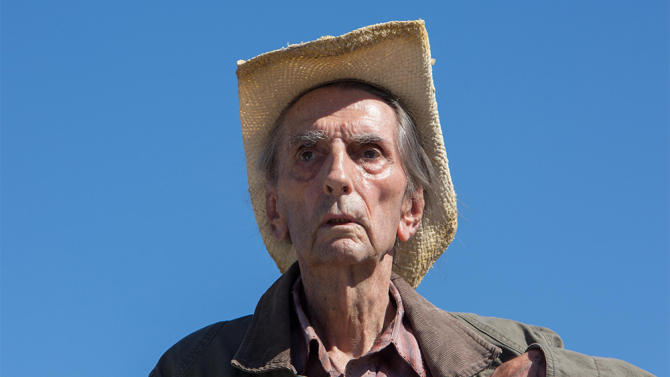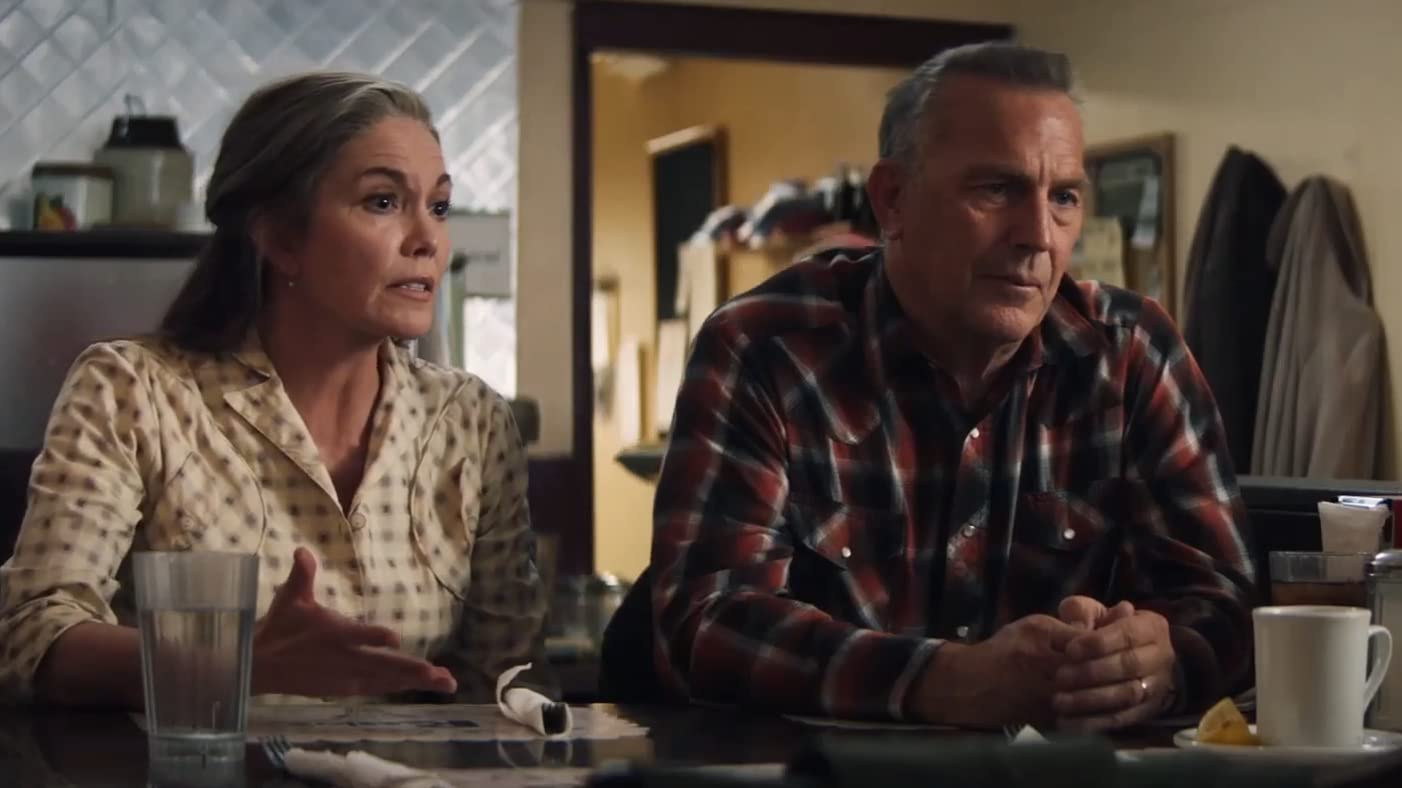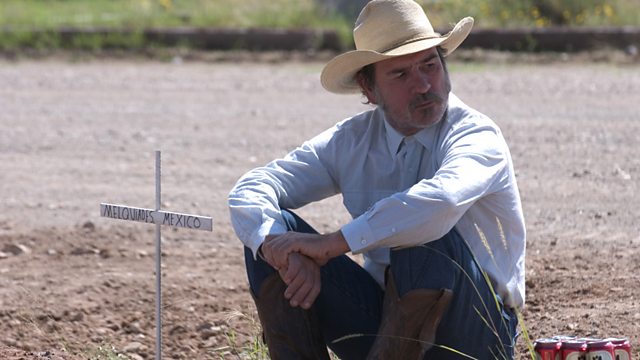
Just saying that “cowboy culture in the modern setting” already has an intriguing ring to it. No wonder some of the best shows of our modern times were “Justified” and some of the masterpieces of modern cinema have been films like “No Country for Old Men”.
The audience loves this sub-genre because speaks to both the genre’s roots in traditional Westerns and its contemporary reinterpretations. It becomes fascinating to watch western mythology and its themes in the modern setting. It also helps that some of the neo-westerns are far from clear-cut archetypes of the classic westerns. Instead, they focus on more nuanced, flawed, and complex characters. They also incorporate elements from other genres, especially crime dramas, which makes them appealing to a broader audience.
Examples of the modern “first phase” of neo-Westerns include films such as “Lonely Are the Brave” (1962) and “Hud” (1963) and while it never got too popular enough to turn into a trend or something, the neo-westerns have existed since then and gave us some truly amazing films like “Hell or High Water”.
As with every genre and sub-genre, there are of course lots of entertaining, thematically rich and/or thought-provoking films that went under the radar. Here are the ten neo-western films that hopefully will not appeal not only to western fans but to everyone else as well. We’ll have some action-packed ones, more slow-burn types, some funny and some sad – all kinds, so any type of neo-western fan can enjoy.
10. Mystery Road (2013)

Aussie Westerns always deserve attention, so maybe it’s better to kick off the list with this one. It gets especially interesting when they address the issues of racial dynamics and Indigenous experiences in Australia and this film belongs to that category. While there are clearly influences from the American western cinema, the final result is still very Australian.
The film begins with a chilling discovery— the body of a teenage girl found by a truck driver, setting the stage for newly promoted Indigenous detective Jay Swan’s investigation into a crime that is dismissed by his colleagues due to the victim’s Aboriginal background. Facing indifference and hostility from both the white authorities and his own community, Swan’s pursuit of justice becomes a deeply personal reckoning with identity and institutional corruption.
The film was directed by Ivan Sen, who masterfully crafts an atmosphere of tension through minimalist sound design and a slow narrative pace. This can obviously bore the viewers who got used to more action-packed/fast-paced films, but still it’s worth to give a chance even if you don’t like slow cinema much. The cinematography and the ambient sounds in particular, creates such a meditative experience that you feel very involved with the whole thing. You feel Jay’s isolation yourself. The performances are all good, with some notable work from Hugo Weaving and Jack Charles.
The screenplay for the film was inspired by a tragic event in the filmmaker Ivan Ser’s own family involving the unsolved murder of an Aboriginal girl in rural New South Wales and he feels connected to the main protagonist in some ways. Here he aims to present Indigenous culture through a genre lens, using the murder mystery format to explore deeper societal issues that are usually overlooked and the result is impressive. The film later resulted in a spin-off series with the same title.
9. A Night In Old Mexico (2013)

Robert Duvall is an underrated western icon. He feels a little underrated in general as well; the man has made lots of films in so many different genres and his performances in films like “The Great Santini” and “The Apostle” can go toe-to-toe with any actor that are considered among the greatest of their generation.
Duvall’s own favorite performance is in the western series “Lonesome Dove” (arguably career-best work) and he has given many other amazing performances in the genre, both on TV and in film. He’s convincing both as a hero and as a villain; you can just watch him in “Joe Kidd” and “Open Range” to see what he’s capable of doing. That’s why “A Night in Old Mexico” deserves a mention, it’s one of the last films that gives him a chance to shine in this kind of role. Is it a great, flawless film? Probably not, but Duvall’s performance alone makes it worth watching. His performance is full of nuances and brings depth to his character, showcasing not just a tough exterior but also the vulnerabilities that come with age and loss.
Of course, there are other great elements as well. Critics and audiences alike often overlook the film due to its quieter pacing and understated style. The genre is best known for its gunfights and heroic showdowns, that’s why the film taking a more reflective approach, inviting viewers to ponder the complexities of life, family, and legacy probably didn’t appeal to everyone. Back to the performances, the supporting cast has a lot of fun characters. So much so that one critic said it reminds Elmore Leonard novels in that regard. The film might not win the regular watcher’s heart easily but if you love to watch veterans in a great late-career starring role, this is a good one.
8. The Last Stop in Yuma County (2023)

A quirky, independent neo-Western/noir that has a simple story but tells it in a very non-simple way which makes it both thrilling and exciting. It helps that it has a lot of Coens and Tarantino influence in the best way possible. Back in the 90s, indie thrillers like that had more chance to do modest enough box office but now, unfortunately, they get lost. That’s a shame because this taut, stylish thriller deserves a bigger audience.
It’s directed, written, and edited by Francis Galluppi who made his first feature film debut here but his previous experiences at making shorts or music videos are evident here because some shots feel like they’re coming from a seasoned veteran. He was even close to scoring the film as well. The story is set in a remote desert location in Yuma County, Arizona, in the 1970s and follows a traveling knife salesman who finds himself trapped at a remote gas station with a pair of criminals who have just pulled off a bank robbery. Then the situation gets intensified.
The story plays around with the classic Western themes of honor, survival and deception. Even if you’re not a fan of these type of films and think they all come off as very “samey”, you’d still want to give it a chance because the characters here are very colorful and the film has its own ideas that sets them apart from the usual black comedy crime films of its kind.
The cast, in particular, are all familiar faces if you’re into American independent cinema. Galluppi has picked them all without auditioning, and them all being cinephiles and passionate actors about their craft have all added something to it. He claims nobody was there for the paycheck and it shows. The film proves that (neo-)Westerns don’t need epic landscapes or brutal shootouts to be engaging—sometimes, all it takes is a gas station and a handful of interesting characters.
7. The Way of the Gun (2000)

Christopher McQuarrie was perhaps best known for writing Bryan Singer projects, most notably “The Usual Suspects”. After directing this film, he found himself in director’s jail up until finding a new career path by collaborating with Tom Cruise on things like “Top Gun: Maverick”, “Valkyrie”, “Mission: Impossible” franchise, and “Edge of Tomorrow”. One of the many reasons that made him such a reliable collaborator with Cruise is his deep knowledge of cinema. The last phase of Cruise’s career might feel action-heavy but some of them like “Maverick” is much more dramatic while “Edge of Tomorrow” is more comedic with heavy sci-fi elements.
Things like that show McQuarrie’s versatility and here in “The Way of the Gun” he brings a brutal, cynical take on the Western outlaw story. Benicio del Toro who had major breakthrough with McQuarrie-scripted “Usual Suspects” and Ryan Phillipe play two low-life criminals who who kidnap a pregnant surrogate mother (Juliette Lewis), only to find themselves entangled in a deadly game with ruthless mercenaries and mobsters.
The cast is all excellent and it’ll make you sad once again about James Caan’s passing. Who knows why this film didn’t get the attention it deserves because it has everything that many films these days lack; Unpredictable storyline, morally ambiguous and complex characters, stylish shots, and very sharp dialogues. It shows that maybe McQuarrie should try to do something less action-y but more like this with Cruise. Some of the influences are obvious, especially the 70s crime films but “Way of the Gun” feels very original. It has a depth to its story with a screenplay that has wit and holistic tone. The climax alone deserves an extra point. Less innovative than “The Usual Suspects” maybe but certainly worth watching.
6. Down in the Valley (2005)

Edward Norton is not a fan of the cowboy values, at least, not the way it was romanticized in the films. He thinks the whole American ethos of individualism and the idea of taking care of business and family, and of guns manifests itself in “all kinds of weird ways”. That’s how you get that this film will be much different than your traditional western.
Norton and the film’s writer David Jacobson had conversations about what kind of character and story they wanted to bring to the audience. David has told Edward that he’s really interested in fantasy and the role it can play in being a positive act that a person or creates themselves through and then the way fantasy can become negative if a person can’t integrate with reality.
Indeed, his film plays out like an unsettling psychological drama. Norton plays a drifter who has a deep faith in classic cowboy mythos but his obsession with a teenage girl, played by Evan Rachel Wood, soon will turn into something darker than Harlan’s fantasy of a noble outlaw. Even though Norton claims they looked at films like “Lonely Are the Brave” and “Giant”, you can see some conscious or subconscious inspirations from “Midnight Cowboy” and “Taxi Driver” as well.
The film is interesting dissection of the dangers of nostalgia and the consequences of believing obsessively in the myth. The performances are all fine enough, and visually there’s lots of good stuff to be found as well. While it’s shift from a seemingly unusual romance drama to a psychological thriller might be off-putting for some, but it’s still a haunting film worth checking out, especially if you’re into more revisionist type of westerns or are fans of the cast.
5. Don’t Come Knocking (2005)

It probably makes sense to follow a film about the de-mythification of the cowboy persona/culture with another one. The neo-westerns are famous for that because they may take the traditional type of western character or story and can put a modern spin on it which sometimes feels like a criticism of the fading legacy of the cowboy persona. Now if we’re talking about neo-westerns, one simply can’t skip “Paris, Texas”. Wim Wenders masterpiece was written by Sam Shepard, won the Palme d’Or, and had universal acclaim since then.
Now, of course, it only makes sense that when you hear Wenders and Shepard have collaborated on another meditative road movie that can be described as neo-western, then you’d have high expectations. Maybe critics felt a little disappointed with it because they expected something better but if you leave out all that, you’d actually get a rock-solid drama about redemption.
The film follows a washed-up Western movie star who feels his film set and tries to reconnect with his past. More he faces his past, the more he realizes that his life has been built on falsehoods. Shepard is obviously good as you can expect from him in the lead role and one film critic noted how the bitterness in his writing makes an interesting contrast or balance with Wim’s fondness or fascination with American culture.
Wenders hasn’t really made a major comeback in his feature films up until “Perfect Days” (2023) and one can’t claim that “Don’t Come Knocking” was the overlooked masterpiece but there’s still so much greatness in it. Wim’s visual poetry is on full display, the cinematography has some wonderful shots. The supporting cast is all great, from Jessica Lange (The MVP) to Tim Roth to Sarah Polley and so on. The score is memorable as well. Some pacing issues aside, “Don’t Come Knocking” is a wonderful, melancholic poetry.
4. Lucky (2017)

“Paris, Texas” was mentioned and if you think this is the best leading performance of Harry Dean Stanton, then you may want to watch “Lucky” and think about it again. Not a traditional western in any way. It’s more of a beautiful introspective on mortality and solitude. It also serves as a beautiful farewell film for Harry Dean who gives one of his best performances.
The man was always such a natural and remarkable character actor, so it’s a joy to watch him carry the whole thing by playing a 90-year-old atheist living in a small desert town. As he confronts his own mortality, he interacts with a cast of eccentric locals, including a delightful supporting performance from the one and only David Lynch. Their friendship and collaborations were so beautiful that it was always nice to sete them together.
Unlike most neo-westerns, Lucky doesn’t have any kind of high-stake conflicts, but it has the essence of the Western archetype of the lone, aging figure reckoning with his past and the changes in the modern world. It’s also a more spiritual film. Stanton’s moving, beautiful performance also makes the film ring more true. This is his film in every way.
The film is directed by John Caroll Lynch, a character actor himself (who deserved an Oscar nom for “Zodiac”) but is written for and in every way inspired by Stanton himself. It’s not about his life, he doesn’t play himself but the stories in the film are his own stories, his life and memories make the story of Lucky. That is how the material was built and they brought it all together. Even If you’re unfamiliar with his persona or the films, there’s still a very charming quality about “Lucky” that is hard to resist.
3. Let Him Go (2020)

You got to respect Kevin Costner for his dedication to the Western genre. You may like or not like him as an actor, but as he grew older his screen presence has matured and got more charismatic to pull off such roles. “Yellowstone” basically brought back the idea of old-fashioned westerns on television and him doing “Horizon” films, fighting for them to be theatrically released is an admirable attempt.
However, “Let Him Go” is one of the finest neo-westerns of the 2020s. It’s tight, it has dramatic depth, the dinner sequence with Lesley Manville is edge-of-your-seat-level thrilling and while we talked about Costner here more, Diane Lane’s performance is the actual MVP. She brings so much to the part that one wonders how she didn’t get a single major award nomination for this. Her performance gives the emotional weight to the film.
Let Him Go is a slow-burning, character-driven, and adult-oriented western which means it flopped at the box office. Costner and Lane star as a retired rancher couple, George and Margaret Blackledge, who set out to rescue their grandson from an abusive stepfather and his menacing family, the Weboys. As you can expect, things get out of control in soon. Thomas Bezucha’s direction is good enough and he deserves praise for doing a film like this in a time where the studios are obsessed with doing only IP films.
Even when the story feels like it’s going to predictable places, you absolutely do not mind and enjoy the ride. He knows how to build suspense carefully step-by-step, culminating in a cathartic and heartbreaking finale. Performances aside, the cinematography also gives the film a stark atmosphere. Unlike some of the other titles on the list, “Let Him Go” is a type of Western that can please the fans of both traditional and non-traditional type of westerns. It’s also refreshing to see aging couples as our leading heroes.
2. Marlina the Murderer in Four Acts (2017)

Since most of the list is American-centric with mostly male leads, here comes a striking Neo-Western revenge tale. The third feature from acclaimed Indonesian director Mouly Surya, “Marlina the Murderer in Four Acts” has a wonderful and fascinating mix of both the Spaghetti Western traditional and Southeast Asian folklore, which gives the film a unique soul of its own.
The film follows a recently widowed woman named Marlina who gets assaulted by a group of bandits. Now she’s up for revenge, with the severed head of their leader in tow. Even though the story sounds very simple, it’s more than that, and strong cinematography never lets it be yet “another revenge story”.
Marlina is a character that has the elements of a traditional spaghetti western hero. She doesn’t speak much, there is an air of mystery around her. That’s why Marsha Timothy’s performance should be applauded because her performance brings both stoicism and elegance to her character in the tradition of best western heroes where you keep wondering what is she thinking, what is she going to say or do. She’s also not some kind of fantasy badass who kills everyone and feels no remorse. While the film’s message against patriarchy is clear enough, it also gives lots of vulnerability to our lead character as well.
The film has also been called as a “feminist western” and it makes sense a lot here because it’s not getting called like that only because the lead character is a female but the film also takes time to explore female allyship because women in the film have a great deal of trust in each other. There’s also little bit of humor injected into it in the right dose. The film got more attention than the director’s previous films in Indonesia but still for the international audiences, it went under the radar.
1. The Three Burials of Melquiades Estrada (2006)

Tommy Lee Jones can do it all. Football player, polo player, strong skills when it comes to horses and guns, great actor, strong director, and so on. He can do so many things, except giving interviews. The man never liked press junkets or talk shows. It’s almost torture for him to go through but he did make talk show appearances than usual for “The Three Burials of Melquiades Estrada” when it came out. That alone shows how much he’s passionate about the films he directs himself and indeed, the man has a strong passion for the genre given some of the other films he directed were also westerns. Jones won the Best Actor Prize at the Cannes Film Festival but it wasn’t enough to turn this into a profit at the box office, unfortunately.
The film soon got overlooked. The screenplay also won a prize and it was a well-deserved one. Written by Guillermo Arriaga, who’s best known for writing the early films of Alejandro Gonzalez Inarritu, he once again brings so much humanism and excellent handling of flashbacks and perspectives in his writing. Jones plays a rancher who embarks on a journey to fulfill the dying wish of his friend Melquiades. He was a Mexican immigrant unjustly killed by a border patrol officer.
It was inspired by the real-life killing in Texas of a teenager, Esequiel Hernandez Jr, by United States Marines during a military operation near the United States–Mexico border, and the screenplay, by slowly revealing the truths surrounding his death also exposes political and racial tensions of the region.
Jones is also doing an exceptional job at bringing the story to the screen, his style is both classic and conemporary which is kind of what you want from neo-westerns often. When you deliver a nonlinear story, you also have to handle the editing aspect really well to make the film flow and they were able to do that. The narrative is full of poetic tone, with some tender moments and dry humor as well which only enriches the experience. This is a wonderful and yet another underrated film that deserves a much larger audience.
